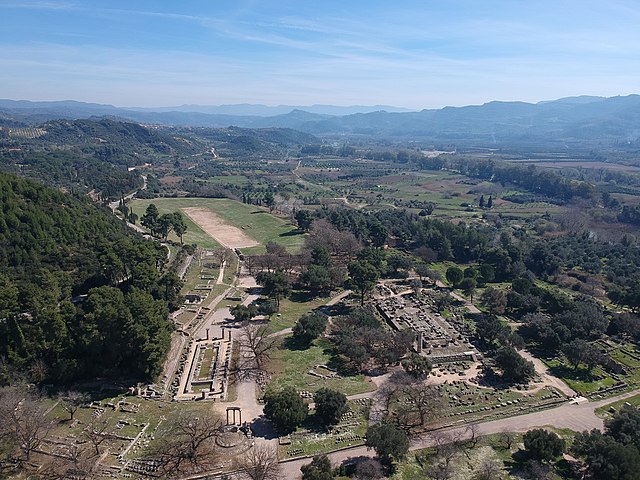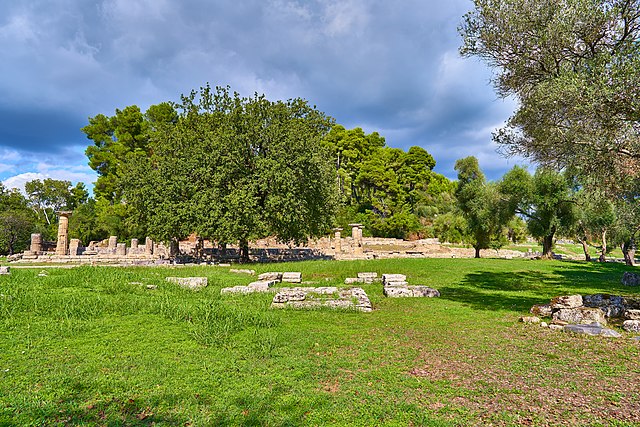The Olympic flame is a symbol used in the Olympic movement. It is also a symbol of continuity between ancient and modern games. The Olympic flame is lit at Olympia, Greece, several months before the Olympic Games. This ceremony starts the Olympic torch relay, which formally ends with the lighting of the Olympic cauldron during the opening ceremony of the Olympic Games. The flame then continues to burn in the cauldron for the duration of the Games, until it is extinguished during the Olympic closing ceremony.
The Marathon Tower at the Amsterdam Olympic Stadium, where a symbolic flame burned in 1928
Lighting the olympic flame in a dress rehearsal in Greece, using the sun's energy
Olympic torch relay, 1952
Olympic torch relay, 1996
Olympia, officially Archaia Olympia, is a small town in Elis on the Peloponnese peninsula in Greece, famous for the nearby archaeological site of the same name. This site was a major Panhellenic religious sanctuary of ancient Greece, where the ancient Olympic Games were held every four years throughout Classical antiquity, from the 8th century BC to the 4th century AD. They were restored on a global basis in 1894 in honor of the ideal of peaceful international contention for excellence.
View of the Palestra, a center for wrestling
The archaeological site showing the stadium, the temple of Hera, the temple of Zeus. The line of trees, upper right, border a road to the north of the Alfeios. Geologically the site is terraced into the gentle north slope of the Alfeios valley visible in the background.
Peribolos wall remains seen in the foreground from the south against the backdrop of the Temple of Hera
Crypt (arched way to the stadium)








